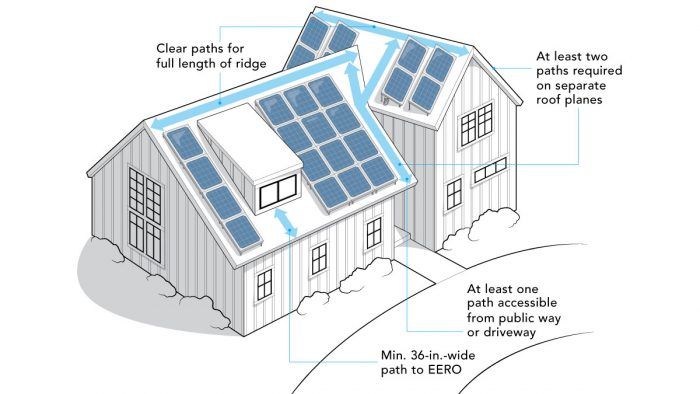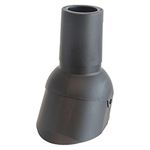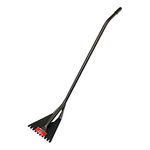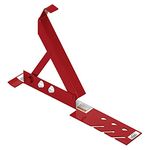Rules for Rooftop Solar
Solar PV now has a solid footing in the residential market, and the building codes have caught up—here's what you need to know.

Synopsis: In this installment of Know the Code, code-expert Glenn Mathewson details the commonly encountered issues with the nonelectrical code provisions for solar PV. These provisions include creating safe pathways for first responders and emergency egress, leaving adequate air space for plumbing vents, determining structural loads, and sealing and flashing penetrations and other connections.
Click here to enlarge the illustration.
Big changes usually happen slowly, and often it takes time for society to catch up to the implications that result. Consider how ride-sharing apps started as an off-the-wall idea, but now there are entire parking-garage levels at major international airports dedicated to the services. I think similar things have happened with rooftop solar.
The Uniform Solar Energy Code was published in the 1970s. Back then, it was all about solar-thermal systems that heat water for space heating and domestic hot water. Though those systems are still available and used and mentioned in codes, the idea never really took off in the U.S. Meanwhile, solar photovoltaics (PV), which turn sunlight into electricity, have grown into a leading technology.
Rooftop PV was still pretty niche a couple decades ago, though it was growing and becoming more established. While the technology was rapidly changing, installation practices were just that— “practice”—and many hazards and failures were yet to be revealed and addressed in building codes and standards. Now, solar PV has a solid foothold in the residential market. On Colorado’s front range, for example, roofs with solar arrays are scattered everywhere. And the codes have caught up.
The International Code Council, partnered with other stakeholders, now publishes a volume titled International Solar Energy Provisions, which combines the requirements from various code publications into one book. Unlike other codes, it was not developed independently. It is simply a conglomeration of the various solar provisions scattered in other code volumes. Electrical and solar contractors know the electrical provisions of the solar code well. It’s the nonelectrical provisions—the ones contained in the Building Planning chapter of the International Residential Code (IRC)—that get overlooked the most.
For installations on houses, Section 324 of the IRC is where the majority, but not all, of the nonelectrical solar provisions are found. These provisions were recently developed, and there’s a lot of new stuff. I’m going to focus on the most commonly encountered issues, though there are numerous exceptions I encourage you to check out on your own.
Firefighter access to the ridge
Though firefighting practices differ from district to district, the concept of venting and controlling the smoke and heat of a structure fire is universal. Fighting fire requires managing smoke and air, and that means controlling and creating openings. Often firefighters will ascend to the ridge of a roof to cut a hole and vent the smoke. Doing so provides a way for the smoke to exit a room and allow for a rescue operation. It takes enough bravery to scale the roof of a burning home, and putting solar panels in the way just increases the danger.
On the other side of the discussion is the science of solar and the difficulty of efficiently placing panels to provide the most watts. Not all surfaces of a roof are solar-friendly; in the northern hemisphere, south-facing, unshaded exposures are the prime real estate for solar-panel installations.
To provide the most effective panel arrangement possible, while still providing a path for firefighters, the code gets a little complicated and specific:
- At least two 36-in. or wider paths must be provided on separate roof planes from the lowest roof edge to the ridge.
- At least one of the paths must be accessible from a public way or driveway.
- Each roof plane with a PV array on it must have a 36-in. or wider pathway on that roof plane, an adjacent roof plane, or straddling that plane and an adjacent one—for example, a valley or hip. Where a path straddles roof planes, it counts as one path, but can be attributed to either roof plane to meet the requirements of the first bullet.
- Pathways must be over areas capable of supporting firefighters accessing the roof.
- These pathways must be in areas with minimal obstructions (such as vent pipes and mechanical equipment).
Once at the ridge, the path must continue along its length to provide access to cut vents at any place along the ridge. The size of the path along the ridge depends on how much of the roof is covered in PV panels. For roofs where PV panels cover up to 33% of the total area in plan view (essentially, as seen from above), the panels must be at least 18 in. away from a horizontal ridge on both sides to create the 36-in.-wide path. Where panels cover more than 33% of the roof, a 36-in.-wide path is required on both sides of the ridge.
Clearances to EEROs
Windows used for emergency escape—often colloquially referred to as “egress windows” but described in the code as “emergency escape and rescue openings” (EEROs for short)—need clear getaway routes to serve their purpose. A quick slide down a bank of solar panels and off the roof is likely just as deadly as braving the smoke-filled path through the house. To remove the chances of encountering such a dilemma, there has to be a safe path from the EERO to the edge of the roof. For any EERO that opens to a roof, a clear 36-in.-wide path must be provided from the window to the eave.
Plumbing vents in the way
Another thorn in the side of effective solar-panel arrangement on roofs is all the other stuff up there—namely, plumbing vents. The drain, waste, and vent (DWV) system in a house is pretty incredible, but rarely honored as such. It transports the most filthy stuff through and out of our homes, cleans itself, and seals itself from the air we breathe using nothing but gravity, water, and atmospheric pressure. But to work properly, the vents that terminate on the roof have to breathe. Though there may be gas vents and dryer vents on roofs, there are usually many more plumbing vents, and often they are scattered around. Even my small 1950s ranch has three plumbing vents through the roof. Solar contractors have had to dance panels around these vents as their industry grew— but not anymore.
The code now recognizes that plumbing vents may be in the way, but they can actually share the space with solar panels. A complete rewrite of IRC section P3103.1 regarding rooftop DWV terminations now specifically allows solar panels to be placed over the top of plumbing vents. Of course, there are limitations, but they speak directly to the issue—air getting in and out of the vent. The vent, when protected from snow closure by the panel design, can be cut down from the minimum height of 6 in. to a height of only 2 in. above the roof.
The vent opening must communicate with outside air over an area no less than the area of the vent pipe, measured on the inside. For a 2-in. pipe (1-in. radius), that area is 3.14 sq. in. Assuming the pipe is clear around all sides, a panel could be as close as 1/2 in. above the vent and still provide the minimum 3.14 sq. in. of communication with the outside air.
A quick slide down a bank of solar panels and off the roof is likely just as deadly as braving the smoke-filled path through the house.
The spaces under PV panels, however, create a cozy place for birds and rodents to nest. Such nesting now has a higher likelihood of blocking a vent, and since it would be concealed under the panel, it wouldn’t be obvious to the occupants, who might realize their drains aren’t working right but wouldn’t know why. To address this, the new provisions require vent terminations under solar panels and solar collectors be protected using a “method” that prevents birds and rodents from entering or blocking the vent-pipe opening.
These new provisions speak to the issues of air movement, snow, and nuisance animals, but don’t specify exactly how to design for them. Installing a screen over the vent is probably not a good idea, as that may create a foundation to encourage nest-building or other debris to settle in place. More commonly, the entire perimeter of the array is screened. A nonspecific code provision allows for freedom of design, but it can also allow more varied interpretation among building authorities.
Structural loads on the roof
Since panels first were placed on roofs, many building departments have asked about the sufficiency of the existing roof to carry the new loads, and this is a very valid question. U.S. housing stock was built over more than two centuries of trial and error and renovation. There is no shortage of surprises that can be found in the attics of homes, and I’m not talking about what’s in the dusty boxes. There is no guarantee of what the roof can hold, so section R324.4.1 makes a statement that the roof “shall be designed and constructed to support the loads imposed by such system in accordance with Chapter 8.” Chapter 8 provides prescriptive roof construction methods from the code, so this statement is not directly requiring “engineering” of the roof structure. Subsections clarify that the roof must support the dead load of the roof including the weight of the panels plus the local snow load. Alternatively, where the snow load is less than the minimum required roof live load (12 psf to 20 psf depending on size and slope), the roof must support the dead load of the roof and the live load.
When panels are to be installed, the existing roof must be verified to either meet the current prescriptive roof design requirements in Chapter 8 or be analyzed and approved by an engineer. When structural upgrades are required, it’s often not due to the weight of the panels—it’s because the old and often modified roof can’t be proven to support even the minimum design snow load. The prospect of adding PV panels essentially brings forth the sins of the past.
Wind loads are addressed in section R324.4.1.2, but they only apply to the panels, the modules, and their supports. Unlike dead and snow loads, the roof itself is not specified as part of the analysis. The PV system is looked at essentially like cladding, and thus the wind-load table for cladding is what is used to determine the load the panel system must resist depending on factors such as exposure, windspeed, roof area, roof slope, and where the panels are located on the roof, such as near an edge or in the center. Though not directed by code, it is clearly a good idea to be sure the rafter connection to the ridge is sound, and/or there are ridge straps or collar ties installed.
Penetrations and connections
Rooftop PV requires a lot of connections to the roof, and each of these is a penetration through the roof covering. A huge variety of mounting systems have been tried as the industry has grown, and all these systems have various methods of sealing to the shingles or other roof covering. Section 324.4.3 simply states that penetrations of the roof covering “shall be flashed and sealed in accordance with Chapter 9.” This chapter covers roof assemblies (roof coverings), but doesn’t provide specific details for how exactly to seal and flash these mounting systems. Rather, R903.2 simply requires you keep the moisture out, and R904.1 requires you install materials according the manufacturer’s installation instructions. There’s not much more to it.
While “more codes” can be viewed as negative, I think that’s a limited view. Model building codes are designed to respond to society, and society is ever-changing. When new technologies become commonplace, they become a larger hazard to communities and yet are simultaneously more accepted by the people of those communities. Codes step in as these common techniques, hazards, and products are established.
As can be seen with solar, these new things often bump up against old things, and decisions must be made. With emerging trends, these decisions are made locale by locale, frustrating the new industry. Standardizing solutions to new problems provides manufacturers, retailers, and installers consistency in the government regulation of their work. Existing industries are also forced to revisit their own standards. No one thought much about clearances to plumbing vents until they began installing solar panels. Nor did firefighters have to question the minimum path necessary to get to the ridge until roofs were covered in PV.
The new nonelectrical solar provisions are a welcome upgrade to the code and provide a good balance between the freedom of design for a growing industry and the minimum performance and requirements of the existing systems they affect.
Glenn Mathewson is a consultant and educator with buildingcodecollege.com.
Drawing: Kate Francis
From Fine Homebuilding #292
More about solar:
Net-Metering is How Most Solar-Powered Homes “Store” Electricity – Homeowners who install solar panels can get credit or money from their utility company for the power they send back to the grid if their state has net-metering rules in place.
Installing Rooftop PV – Get a detailed overview of how homes are evaluated for solar, how a photovoltaic system works, and how it’s installed.
Reconsidering R-value Recommendations – Does the dropping cost of solar PV systems mean that it’s more economical to just install more PV panels and skimp on insulation.
Fine Homebuilding Recommended Products
Fine Homebuilding receives a commission for items purchased through links on this site, including Amazon Associates and other affiliate advertising programs.

Flashing Boot Repair

Shingle Ripper

Roof Jacks





